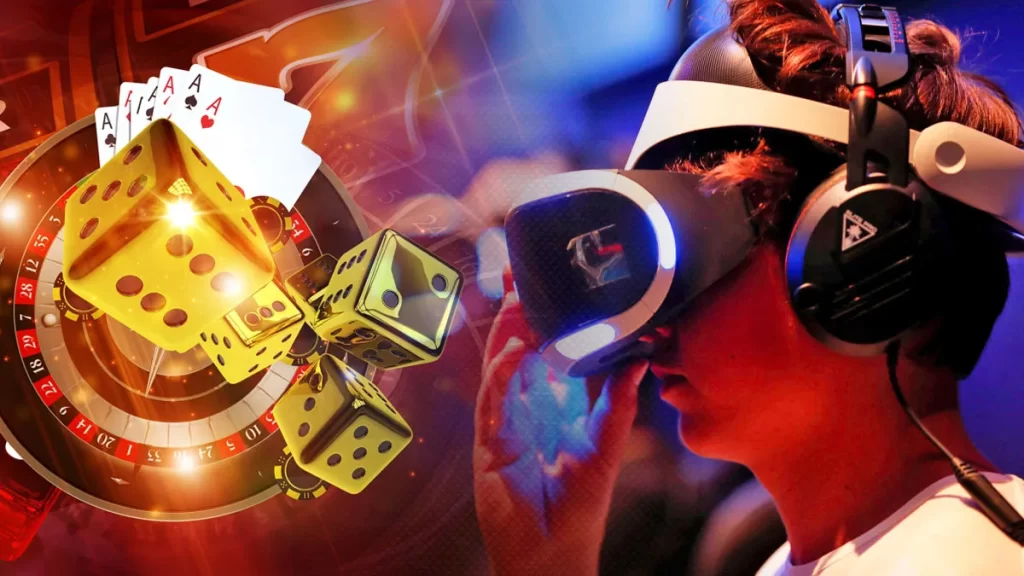Virtual reality is set to change the way we experience entertainment, and gaming in particular. This article looks at the possible uses of VR for online gambling and how this technology can be used to make the gaming experience more realistic. It also explores the possible applications for VR in the casino world and the obstacles that exist in implementing it.
Avatars
Avatars are digital representations of people that can be used to deliver information or support for individuals. They can be static, animated, or 3D. These avatars are often used in online communities, web forums, and gaming environments.
Researchers are trying to understand how avatars impact human behavior. In particular, researchers are interested in finding out how individuals’ attitudes and behaviors change over time.
In the past, research has focused on visual fidelity, but more recent work has explored nonverbal interaction. Nonverbal behavior is important in virtual reality because it allows for communication between avatars.
Virtual human interaction is a new research domain that examines how people behave in a shared virtual environment. Studies have examined how avatars influence people’s emotions, behavior, and social interactions.
In the future, AI-based realistic avatars will be powerful tools of expression in metaverse environments. However, these AI-based avatars will need to meet certain criteria to ensure a smooth user experience. For instance, they should be able to represent people, organizations, and media.
Although the technology for creating avatars is available, the development process is still not simple. For example, it involves scanning a person’s face to create a three-dimensional model of the head and body.
Several companies are working to make avatars more accessible. For example, Lumirithmic envisions people being able to scan their own faces at home and use them as avatars. The company uses mobile devices to capture 3-D facial scans.
As more sensing and data are available, it will help designers create better avatars. One study found that avatars can affect participants’ emotions and motivation for physical activity.
Another study found that avatars can change how people interact with other users in shared VEs. For instance, participants tended to be more motivated by higher sex-salient avatars.
In the future, more realistic avatars will incorporate face recognition and body recognition. This could increase their appeal to a diverse target population and help them reach underrepresented groups.
In the past, financial services adopted a wait-and-watch approach to technology. This method has been challenged by increasing competition and the need for faster, more innovative digital experiences.
Immersions in virtual environments
In the gambling industry, immersives in virtual environments enhance the gambling experience. However, these same technologies also present potential negative impacts. As a result, more research is needed to determine the extent of these effects.
Immersions in virtual environments have been studied in a variety of domains. Some studies show that these effects are short-lived. Still, most do not examine the impact of skills learned in VEs on real-world functioning.
The level of immersion depends on the cognitive subjectivity of the user. It is also dependent on the content of the virtual environment. For instance, a chess game creates strategic immersion when a player chooses the correct solution.
Aside from its visual fidelity, the immersive capability of an VE depends on its extensiveness and vividness. Additionally, its emotional fidelity is another critical consideration.
Studies using moderately immersive VEs have shown that they can improve a variety of social skills. However, more work is needed to determine how these skills are transferred to the real world. Several studies are underway to assess the effects of immersive technologies on learning.
A unified definition of immersion will help researchers across studies to compare the effectiveness of similar intervention methods. This approach can also be used to evaluate the appropriateness of VEs.
One example of this is a study of a high-immersion VR Desktop. This VE replicates a physical laboratory as a 3D model-based virtual environment.
However, in this study, only participants without signs of gambling addiction were recruited. Thus, the results are limited. Although this study may have surpassed the scientifically acceptable threshold, it may not be enough to justify the use of VR in gambling therapy.
Furthermore, this study does not explore the effect of immersion on decision-making. Therefore, a better understanding of the relationship between immersion and decision-making is necessary. Ultimately, more studies are needed to determine whether immersive technologies enhance gambling experiences.
However, this study does indicate that immersive technology can sharpen a competitive edge. More work is needed to examine the effects of such technologies on learning and therapy. Meanwhile, immersive technologies continue to grow and develop.
VR’s potential as a clinical tool
Virtual reality has the potential to help gamblers. It can simulate the real-life situation and induce emotions associated with gambling. Therapists can use virtual environments to assess gamblers’ cravings and reactions. They can also identify high-risk situations and implement relapse prevention techniques.
Several studies have shown that VR can be effective in treating anxiety, social phobia, and posttraumatic stress disorder. However, more research is needed to determine its effectiveness in addiction treatment.
Early experiments with virtual environments have allowed therapists to better understand and measure the potential of the intervention tool. In the context of pathological gambling, a pilot clinical trial found that VR could be a useful tool for detecting dysfunctional thoughts and behaviors. The resulting cognitive restructuring strategies can be used to address gambling-related beliefs and behaviors.
The first step to using virtual reality in treatment is to assess whether the patient is ready. While some patients are hesitant to participate, others have a positive opinion of the experience. Before the immersion begins, a therapist should make a thorough assessment of the patient’s health and fears.
Next, the therapist should prepare a plan for the sessions. If the user is unwilling to participate, the therapist should focus on other interventions. For example, a therapist can encourage the patient to describe the effects of gambling, discuss the reasons for not gambling, or discuss the consequences of gambling.
The therapist can then proceed to immerse the user in a virtual environment. During the immersion, the therapist should ask the patient to perform certain tasks in the virtual environment. A hierarchy of pre-defined steps allows the patient to gradually progress in the environment.
Throughout the immersion, the therapist can help the user learn new skills and strategies. At each step, the therapist can remind the user that the situation is not real. This may be harder to achieve during VR sessions, especially if the patient has strong emotional triggers.
Finally, a therapist should practice cognitive restructuring, a technique that involves challenging and altering the patient’s core beliefs. This strategy may be more difficult to apply in the presence of emotion-related triggers, but it can provide richer clinical material.
Obstacles to implementing VR in online casinos
In the last few years, online casinos have become a popular trend among gamblers. They are more secure and give players the flexibility to choose their in-game preferences. With the advancements in technology, these online casinos have also introduced virtual reality. However, the adoption of this technology is still in its early stages.
VR has the potential to revolutionize the gambling industry. This technology allows players to experience the same casino atmosphere in their home. It provides a more engaging and fun gaming experience. A lot of companies are working on VR technologies and the market for these headsets is booming.
However, there are a few obstacles that stand in the way of implementing VR in online casinos. These include the high cost of the hardware. Also, VR will require a strong internet connection. Many people do not want to spend the money on the equipment. The cost will drop as more people use the gadget.
Another obstacle to implementing VR in online casinos is the social aspect. Unlike traditional casinos, which are strictly limited to the United States, online casinos offer gamers the chance to interact with others from all over the world. For instance, SlotsMillion offers a traditional casino, with realistic graphics and avatars. You can chat with other players and even move around the casino floor.
There are also concerns about addiction. According to one study, immersion in VR significantly correlated with the severity of gambling addiction.
While the potential of VR in the gambling industry is immense, it still has a long way to go. Even with the advancements in the technology, it will take a few years for the industry to adopt this new technology.
VR can help online casinos improve their games and create an experience that is more immersive. Gambling enthusiasts would enjoy playing games in a simulated casino environment. If they like the virtual experience, they can play for real money. But, if they don’t, they can enjoy online gambling from the comfort of their homes.
Although the gambling industry has already made huge investments in the technology, there is a lot more to be done. The industry will need to make changes in its business practices to facilitate VR play.







More Stories
Deep Dive into Regional Casino Regulations and Licensing for International Players
Behind the Curtain: The Tech That Keeps Online Casinos Secure and Fair
Emerging Markets in Asian Online Gambling: The New Digital Gold Rush